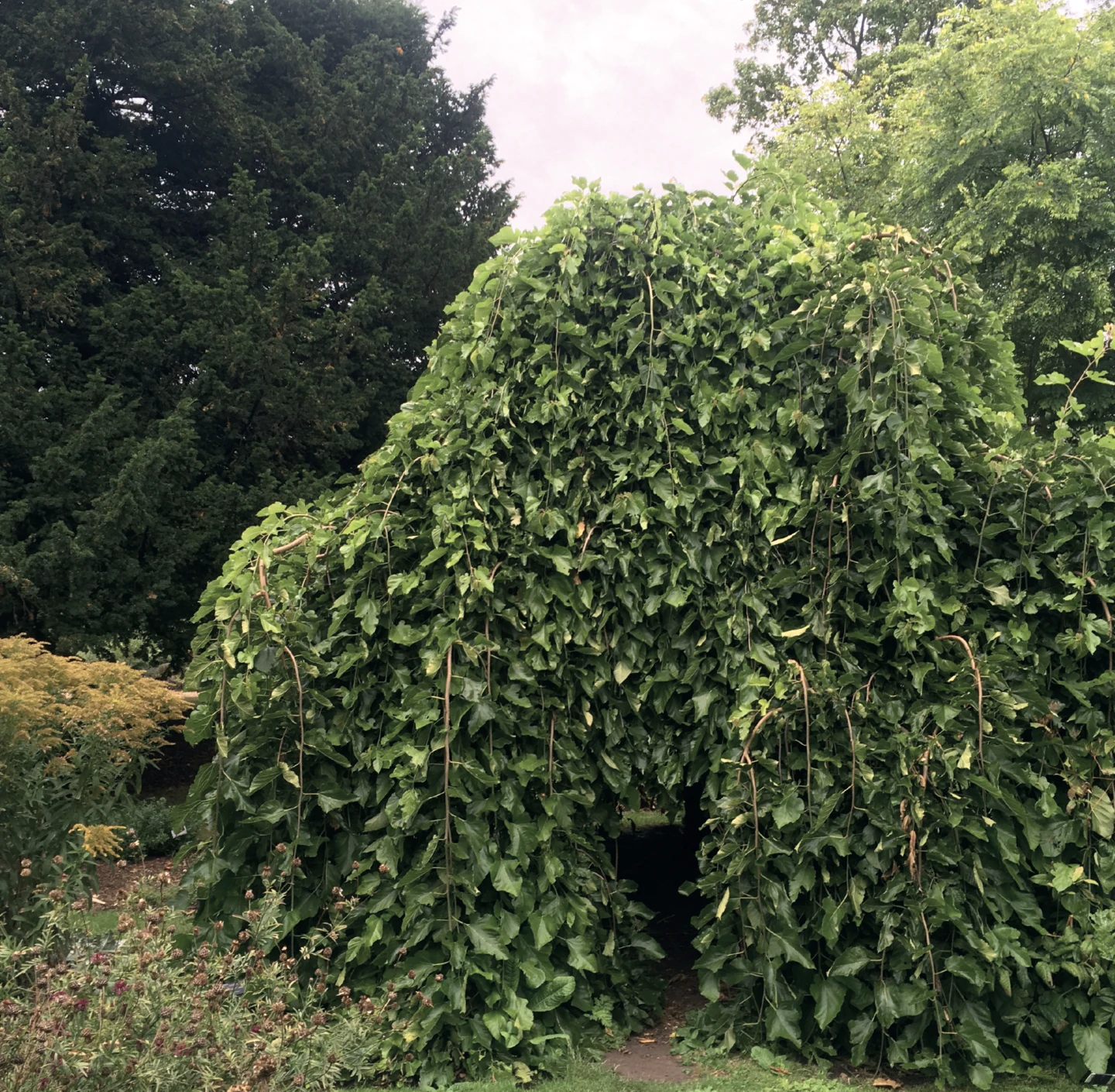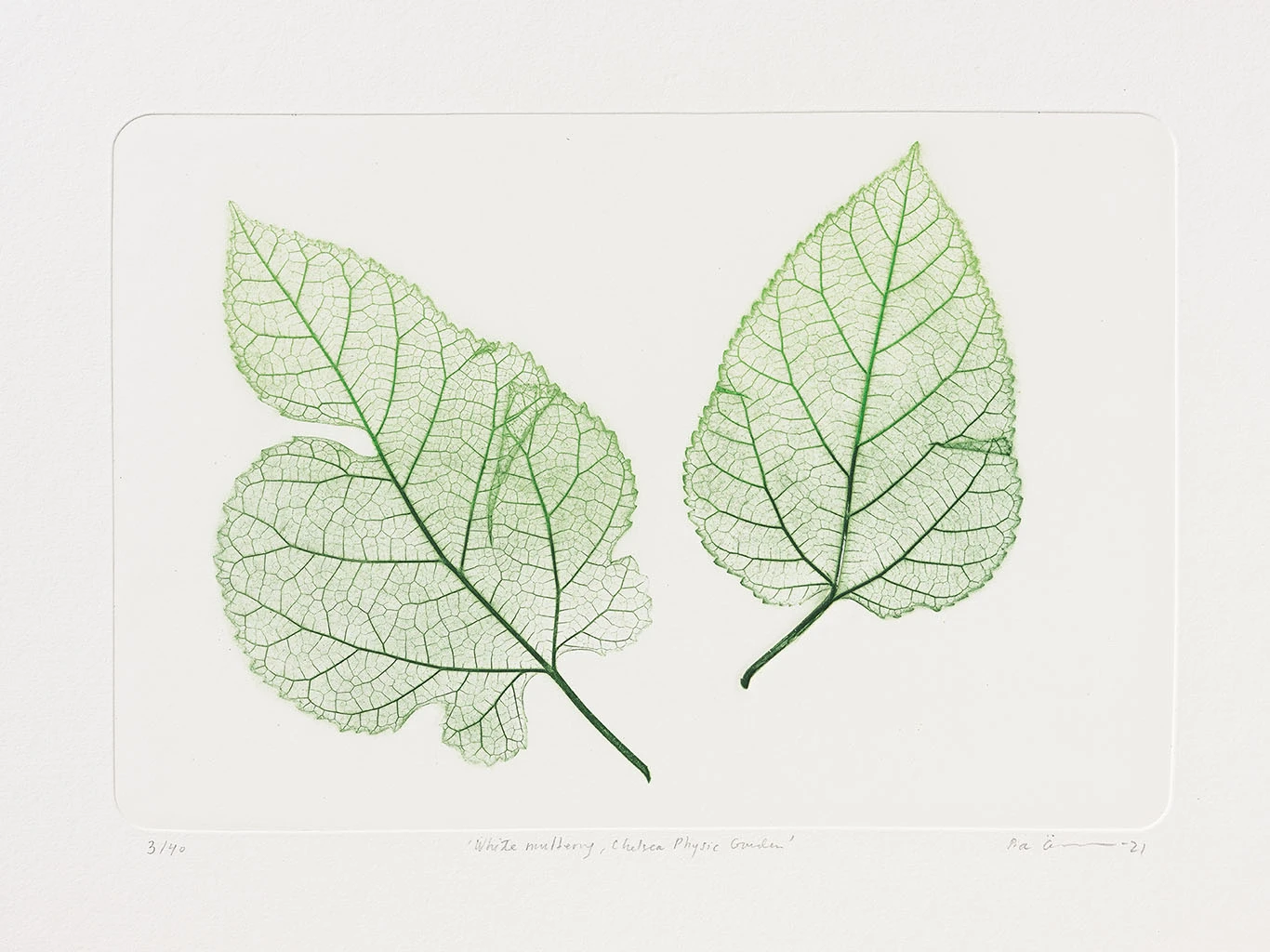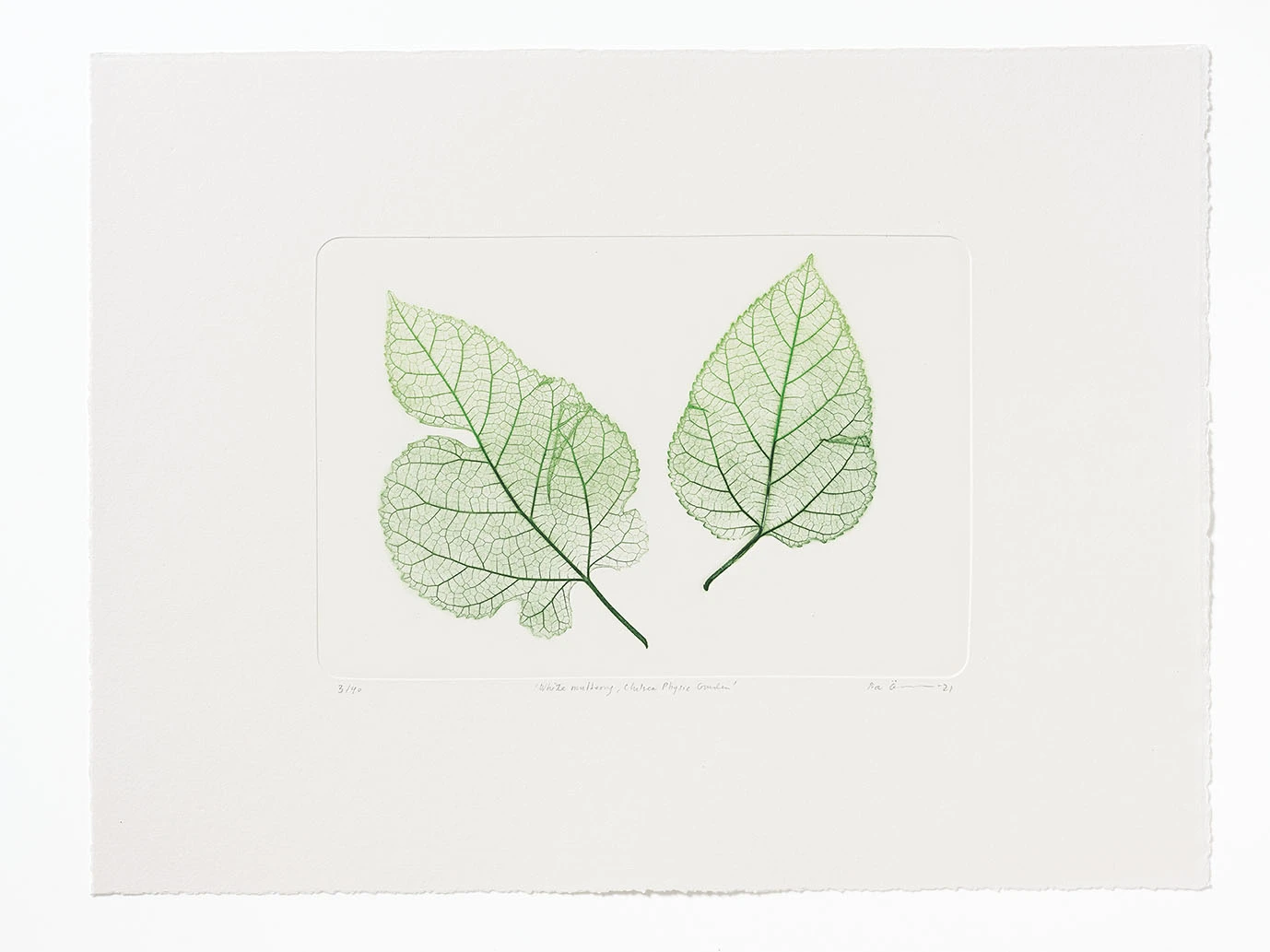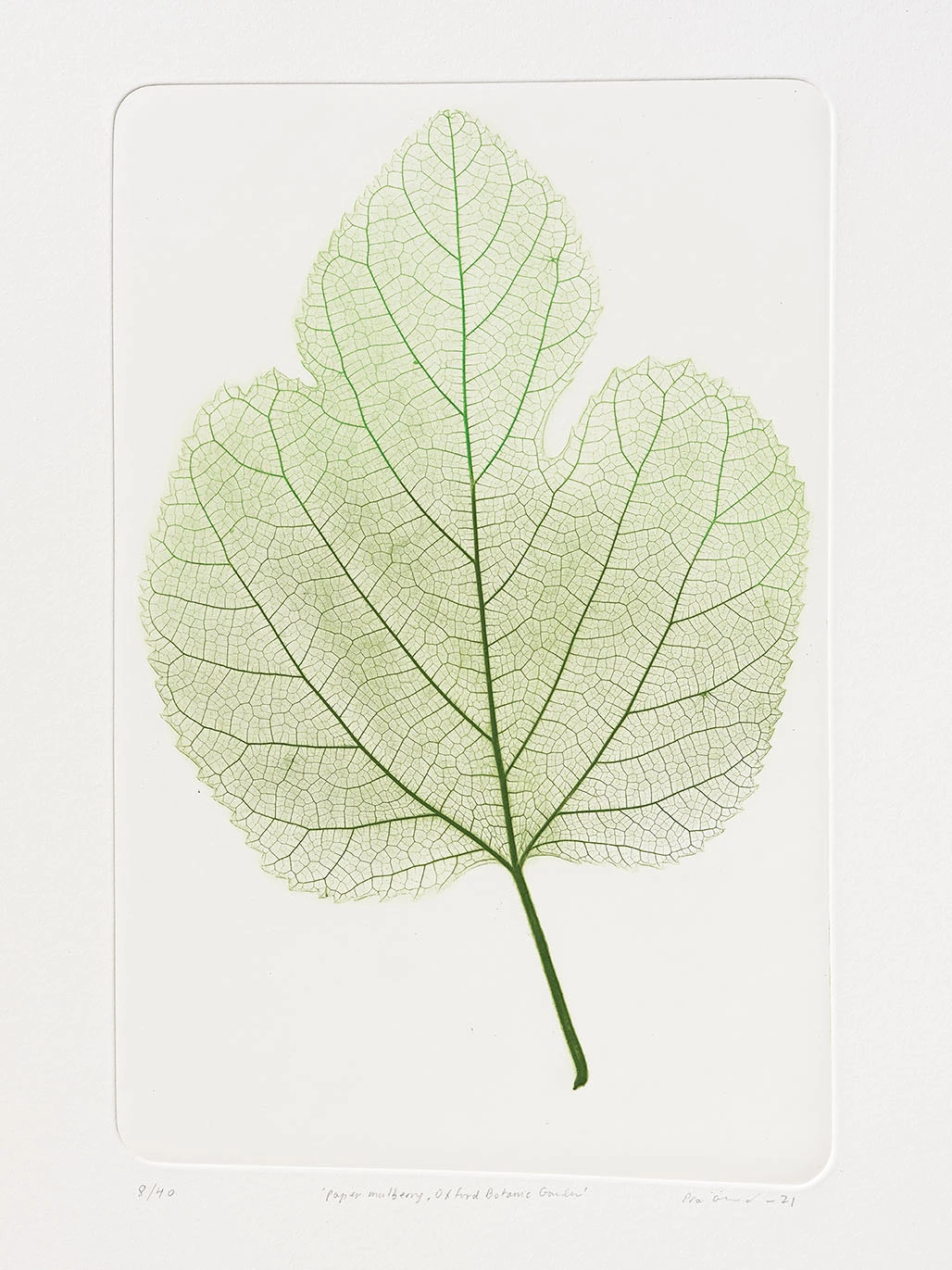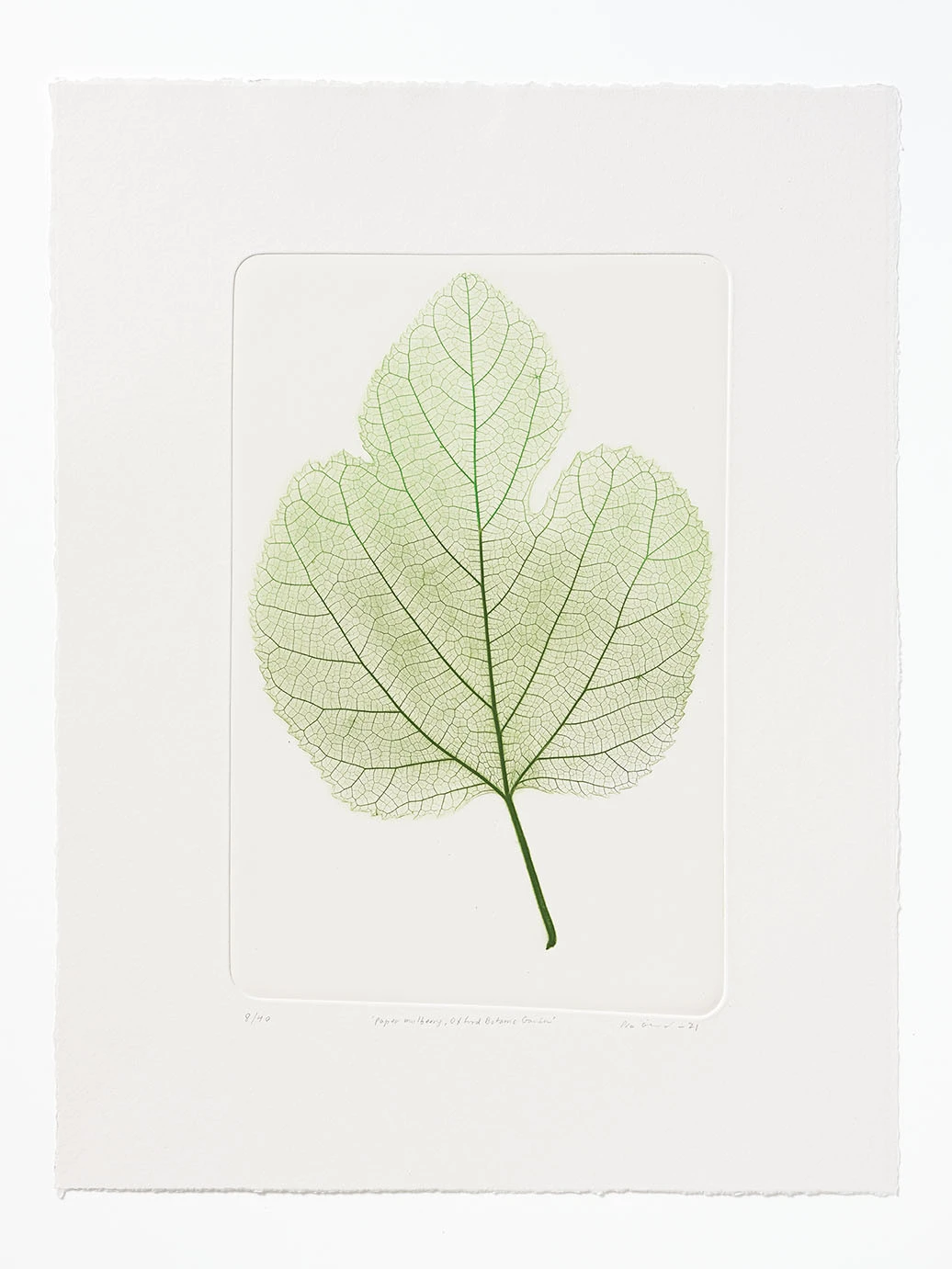Leaf impressions from three remarkable trees, all in one way or another intertwined with places I've worked and the materials used in nature printing. The dark leaf, with a heart-like shape, is from the beautiful black mulberry tree (Morus nigra) at Chelsea Physic Garden. It can be admired from the windows of the Garden Office. Each year in August, the tree becomes laden with large blackberry-like fruits, irresistible to humans and pigeons alike but impossible to pick without exploding in your hand, the fruits will stain your fingers like dye. The feasting pigeons look like they'd been through a blood bath.
Chelsea Physic Garden is also home to a white mulberry tree (Morus alba). It is the one pictured in the photograph and from which a pair of leaves has been collected and printed. The delicate, thin nature of these leaves make them the food of choice for silkworms; but there is something else about this particular tree and its surreal shape which invites you to hide inside it. If I remember correctly it featured in somone's romantic, verging on risky, memoir.
The largest leaf on display comes from the paper mulberry tree (Broussonetia papyrifera) at Oxford Botanic Garden. It grows at the entrance to the Literary Woodland Garden. It survived the heavy winter storms of last year but was split in half (the tree next to it came down). For centuries the fibre of the inner bark of the paper mulberry has been used to make very thin, yet very strong, Japanese papers known as kozo, which is used in printing, book binding and for mending paper tears.
